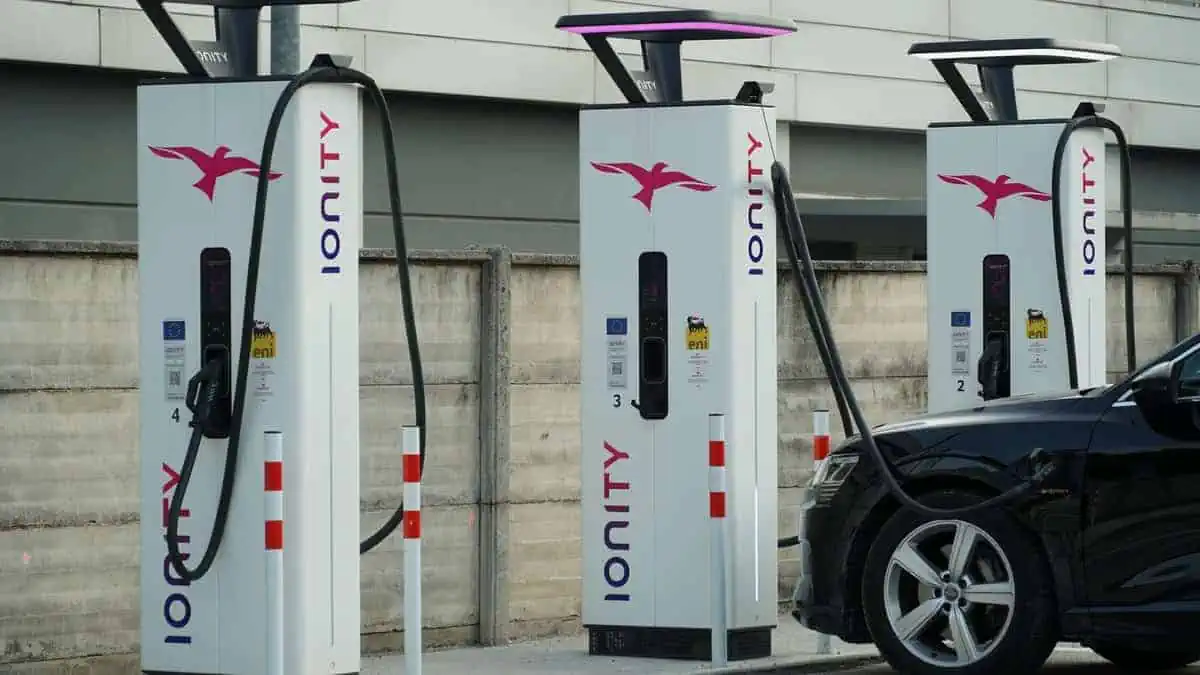The European Union took another step forward toward a green and sustainable future with its new initiative that will significantly address one of the top electric vehicle adoption barriers, the lack of charging infrastructures.
The Council just passed new legislation requiring EV fast chargers every 37 miles throughout the region’s primary road network under the “Fit for 55” program.
“The new law is a milestone of our ‘Fit for 55’ policy providing for more public recharging capacity on the streets in cities and along the motorways across Europe. We are optimistic that in the near future, citizens will be able to charge their electric cars as easily as they do today in traditional petrol stations.”
Raquel Sánchez Jiménez, Spanish Minister of Transport, Mobility and Urban Agenda
These kinds of initiatives are expected to aid the EU to hit its target of cutting CO2 emissions by 55% before the end of the decade, based on the 1990 levels.
Regulation details
As mentioned, the newly passed legislation ensures that fast charging stations with a power of at least 150 kW will exist every 37 miles (60 kilometers) across the main highways called the “trans-European transport (TEN-T) network” by 2025.
In addition, it indicates that these planned charging stations must have a total power of at least 400 kW by the end of 2025. Individually, it must have at least one charging stall with at least 150 kW power.
The Council aims to raise the overall output requirement to 600 kW per charging station by the end of 2027. Meanwhile, individual charging points’ requirement of at least 150 kW will remain.
This new legislation will ultimately kill low-speed charging once providers fully adhere by 2025.
Interestingly, the new legislation also indicates that all new EV fast charging stations must offer convenient card and contactless payment transactions. Therefore, it will ultimately eliminate the need for subscriptions or apps.
To provide you with further details, below are the primary points of the new regulation by the Council of the European Union:
- “from 2025 onwards, fast recharging stations of at least 150kW for cars and vans need to be installed every 60 km along the EU’s main transport corridors, the so-called ‘trans-European transport (TEN-T) network’
- recharging stations for heavy-duty vehicles with a minimum output of 350kW need to be deployed every 60 km along the TEN-T core network, and every 100 km on the larger TEN-T comprehensive network from 2025 onwards, with complete network coverage by 2030
- hydrogen refuelling stations serving both cars and lorries must be deployed from 2030 onwards in all urban nodes and every 200 km along the TEN-T core network
- maritime ports welcoming a minimum number of large passenger vessels, or container vessels, must provide shore-side electricity for such vessels by 2030
- airports must provide electricity to stationary aircraft at all gates by 2025, and at all remote stands by 2030
- users of electric or hydrogen-fuelled vehicles must be able to pay easily at recharging or refuelling points with payment cards or contactless devices and without a need for a subscription and in full price transparency
- operators of recharging or refuelling points must provide consumers full information through electronic means on the availability, waiting time or price at different stations”
See Also:
- Tesla launches complimentary off-peak Supercharging in some European nations
- Spain in EU top five list with the highest public charging points; Netherlands, Germany at the top
- BP Pulse develops first e-truck charging corridor in Europe along key logistics route
- Volkswagen AG operates Europe’s greatest charging network with Elli
- Europe’s largest charging hub for EVs planned for new office space in Edinburgh
The newly passed legislation will appear in the EU’s official journal after the Council formally adopted it. Meanwhile, it will be effective as soon as the 20th day after publication. After that, the new regulations will rule six months following the imposition, the Council stated.






